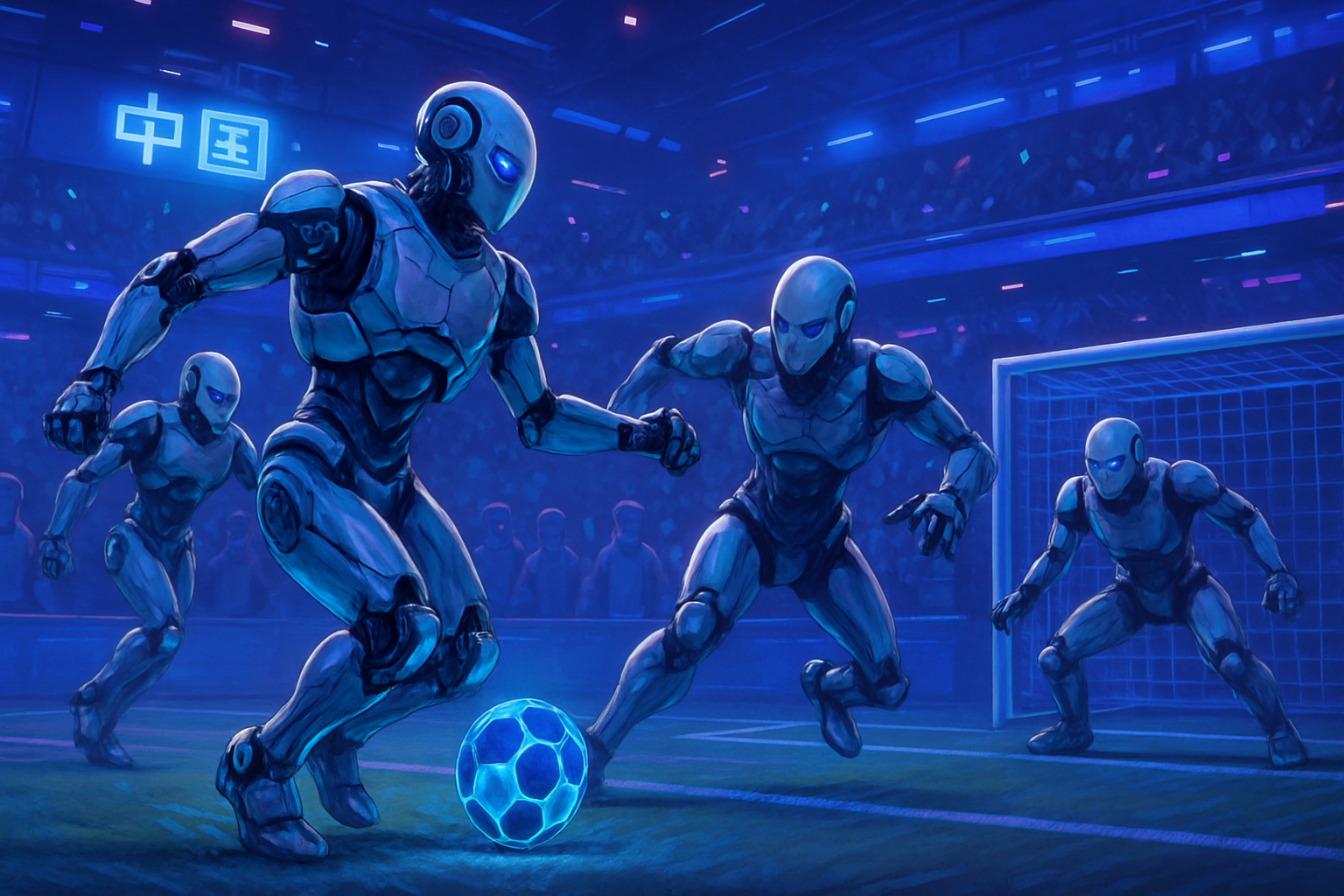The vibrant scene of the intelligent robot football tournament in Beijing has captivated the attention of the entire world. *Teams of humanoid robots* compete with unprecedented precision on a futuristic field. The stakes go beyond mere sports competition; they raise questions about safety and interaction between humans and machines. Fascinating technological advancements are redefining the limits of the possible. In this dynamic, *the commercial and ethical implications* of artificial intelligence development spark passionate debates. The challenge lies in balancing innovation and responsibility in the face of these robots emerging in our daily lives.
A captivating spectacle
The humanoid robot football tournament, held in Beijing on June 28, has fascinated the public. Four teams, composed of robots, played matches three against three, offering an unprecedented performance in front of enthusiastic spectators. These machines, equipped with artificial intelligence, displayed surprising skill in navigating the field.
How the competition works
The robots have evolved thanks to visual sensors that allowed them to identify the ball and avoid obstacles. Their game autonomy, without human intervention, maintained the competition’s intensity. Moments of falls punctuated the matches, sometimes turning the spectacle into a humorous situation. It was necessary to assist some fallen robots, ensuring their return to the field.
The stakes behind the tournament
This tournament goes beyond the simple sports frame. Robotics and artificial intelligence companies saw it as an opportunity to test and improve their technologies. Cheng Hao, founder of Booster Robotics, emphasizes the importance of safety. In the future, matches between robots and humans could be envisioned, thereby enhancing public understanding and trust in these machines.
Background in robotic competitions
China, well known for its technological innovations, has not limited itself to this tournament. Last September, the country had already organized a robot semi-marathon, in which the winner finished in two hours and forty minutes. These events reflect a growing commitment to the development of robotic capabilities.
Toward the robot Olympics
The next step in this fascinating adventure will be the organization of the first “Olympic Games” of humanoid robots, scheduled for August 15 to 17. This competition is expected to generate considerable interest, both in the technology sector and in entertainment. Spectators eagerly await to discover these robotic performances that should push the limits of engineering.
A revolutionary training model
Advancements in artificial intelligence and robotics prompt reflections on training methods. For example, the iconic movement of Ronaldo serves as inspiration to design robots capable of mimicking the gestures of famous athletes. This approach promises to broaden the horizons of robot competitions.
FAQ about the intelligent robot football tournament in China
What is the intelligent robot football tournament in China?
It is an event where teams of humanoid robots compete in a football match, without human intervention, using artificial intelligence to navigate the field.
When did the robot football tournament take place in China?
The tournament took place on June 28, a few weeks before the first “Olympic Games” of humanoid robots scheduled for August.
How do the robots play football in this tournament?
The robots are equipped with visual sensors and artificial intelligence, allowing them to identify the ball and move around the field while avoiding obstacles and other robots.
Can the robots get up after falling during the game?
Yes, the robots can get up after falling, although they sometimes require assistance to leave the field if they cannot stand up by themselves.
What is the main objective of this tournament beyond sports?
The tournament allows companies specializing in robotics to test their machines, improve their algorithms, and work on the safety of interactions between robots and humans.
What implications does the tournament have for robot safety?
It is crucial to ensure that robots are completely safe to consider future interactions with humans, including matches where the outcome is not the primary goal.
How is China positioning itself in the field of robotics and artificial intelligence?
China is proactive in organizing robotics-related events, having previously conducted a robot semi-marathon and continuously testing new technologies in this sector.
What reactions did this tournament provoke from the public and experts?
The tournament generated significant enthusiasm but also controversies, particularly regarding the safety and ethics of using robots in competitive environments.
What technical challenges were encountered during the competition?
The main challenges include precise navigation of robots on the field, avoiding collisions, and rapid responses to the movements of the ball and other robots.
What are the next steps for robotics in China after this tournament?
The country is preparing to organize the first “Olympic Games” of humanoid robots, intending to demonstrate technological advancements and encourage innovation in the field.






